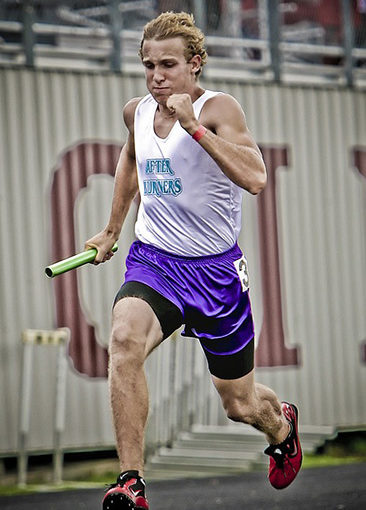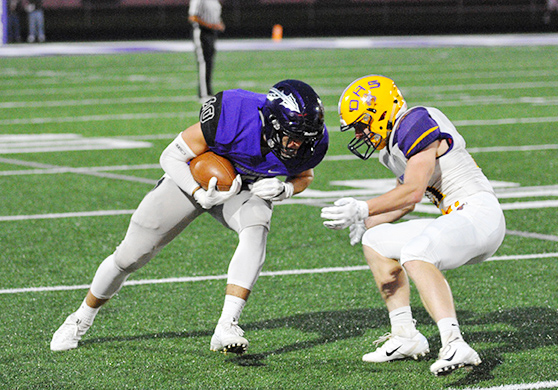Six Ways Coaches Can Promote Long-Term Athletic Development
Research shows that kids begin sports earlier and specialize in sports sooner than they did in the past. The trend toward earlier specialization may improve sports skills in the short-term, but it is not leading to better long-term athletic development (LTAD). In fact, seven out of 10 kids drop out of sports by age 13 because it’s not fun anymore. Unfortunately, kids are dropping out of sports long before they’ve had a chance to fully mature and reach their athletic potential.
The reality is that coaches have limited time with players and tend to skip ahead to the skills and strategies necessary to compete in games or win tournaments instead of building physical literacy – and having fun. As a result, young athletes are increasingly specialized and lack the necessary mental and physical skills to pivot from one sport to another. This limits kids’ athletic options and reduces their potential for long term athletic success – and perpetuates the dropout rate.
 What if sport coaches shifted their focus from simply coaching their sport to developing athletes? It would give kids a chance to build their overall athleticism, develop transferable skills, and stay in sports longer.
What if sport coaches shifted their focus from simply coaching their sport to developing athletes? It would give kids a chance to build their overall athleticism, develop transferable skills, and stay in sports longer.
How can sport coaches promote long-term athletic development?
- Build an Athletic Foundation
Most sports offer opportunities to learn and practice skills like agility, balance, and coordination. These skills are also highly transferable between sports. Coaches should incorporate and develop these basic athletic building blocks. A solid athletic foundation improves performance and reduces injury rates. In addition to teaching proper movement patterns, coaches can also incorporate strength and conditioning into their sport-specific training. For instance, coaches can have athletes move through agility ladders before making a pass in soccer, basketball, or lacrosse.
The National Strength and Conditioning Association developed guiding pillars for long-term athletic development which are a great starting point. The most important guideline is to make fitness fun. Help athletes feel invested in their fitness and physical literacy. Stronger, better-conditioned athletes are more likely to stay healthy and continue to develop a wider repertoire of sports skills over time.
- Encourage Free Play
Athletes today engage in less free play than athletes in past generations. Whether it is unstructured play outside with friends or “pick-up” games at the local park, kids are “playing” less and it shows in their sports performance. Free play is how kids learn to be creative, problem-solve, and make their own decisions. Free play also promotes intrinsic motivation in sports. Encourage athletes to play “pick-up” games in and out of season. Encourage female athletes to play with male athletes and vice versa. Encourage younger athletes to challenge older athletes. Create a fun, challenging environment through pick-up style play (and all for free!).
Most athletes will say their favorite part of practice is when they get to “play” their sport. Yet most practices end with games instead of beginning with them. Consider flipping practices to start with semi-structured free play. Set up small-sided fields, courts, or spaces and let athletes arrive and play. Coaches should give minimal instruction and simply support the flow of the games. After 10-15 minutes, then transition to structured portions of a practice, before returning to game-like conditions.
- Promote Multi-Sport Athletes
The consensus in the research is that specializing in a single sport is not necessary before age 12 (aside from sports in which athletes peak early, like figure skating or gymnastics). Coaches should encourage athletes to play multiple sports throughout adolescence. Athletes who play multiple sports are less likely to get overuse injuries or experience burnout.
Coaches can also emphasize transferable skills between sports. For example, when teaching offense in basketball, show how it is similar to attacking in lacrosse. Similarly, defensive approaches in soccer resemble tactics in hockey. Helping athletes build skills that are beneficial across sports enhances their overall athletic development. Transferable skills also make it easier for athletes to pivot from one sport to another at later stages of their development.
- Communicate When Scheduling
One of the most critical ways coaches can support the athletic development of their athletes is to be mindful of other sports and activities when scheduling their primary sport. Making an extra effort during the preseason to schedule around other sports enables an athlete to participate in multiple sports longer, with less stress. Let the in-season sport set a schedule and carefully work in other sports.
Avoid forcing athletes to prematurely choose between sports. Adolescents are not fully physically developed, nor are they capable of making long-term decisions under adult pressure. Exhaust the schedule possibilities in a collaborative manner. Create ways for hockey players to play recreational basketball in the winter or for lacrosse players to still play club soccer in the spring. Athletes and their families will appreciate the opportunity to balance commitments. Don’t forget to take time off completely from each sport for rest and recovery. The off-season is also a great time to cross-train and build general athleticism.
- Understand Athletic Timelines
Most kids drop out of sports by age 13, before they’ve matured. While development differs for every athlete, most don’t peak in middle school! Coaches and parents can help athletes to develop realistic expectations and understand where they are developmentally and what the timeline may be like before they reach their maximum athletic potential.
Help early bloomers develop their technical skillset so they do not rely too much on being bigger, stronger, and faster first. Chances are, their peers may catch up. Reassure the late bloomers by encouraging them to do age-appropriate strength and conditioning with their sports skills. The late bloomers often surpass the early bloomers in the long run – as long as they don’t get cut or quit first. In addition, support the awkward adolescents by helping them grow into their changing bodies. Help awkward athletes to relearn agility, balance, and coordination. Teaching all athletes how to use their bodies more effectively and develop a well-rounded skill set promotes long-term athletic success across sports.
- Identify Talent and Potential
Experts agree that talent identification is a difficult and imperfect process. Most coaches can easily pick out the athletes who are bigger, stronger, and faster. It takes a more experienced eye to identify potential. Coaches should learn to identify talent and potential. Try to identify the athletes who are not the most physically developed yet, but are building other good habits over time. Look for intangibles like grit and hustle.
Youth sports evaluations and even high school tryouts are a constant challenge. When appropriate, consider pool play situations or mobility between varsity and junior varsity rosters (or A and B teams). Allow youth athletes opportunities to be promoted to an A roster spot over time or build confidence temporarily on a B team. A fluid situation can be very effective with proper communication and consideration between coaches, parents, and athletes. With a mindful, flexible approach, athletes aren’t cut or discouraged, or quit before they’ve really gotten a chance to develop. The end goal is to have every athlete compete at a level where he or she is optimally challenged.
Promoting long-term athletic development in every sport will benefit athletes in their primary sport. The key to long-term athletic success is to help athletes Build Good Habits Over Time.
___________________________________________________
Dr. Lynn Pantuosco-Hensch is an Associate Professor at Westfield State University in the Movement Science Department. She is also a licensed soccer coach with the United Soccer Coaches. Her current research is on LTAD and youth sport specialization.
She thanks Paula Leahy Welch for her editorial support. Reach her at: [email protected] or https://www.lynnpantuosco-hensch.com





